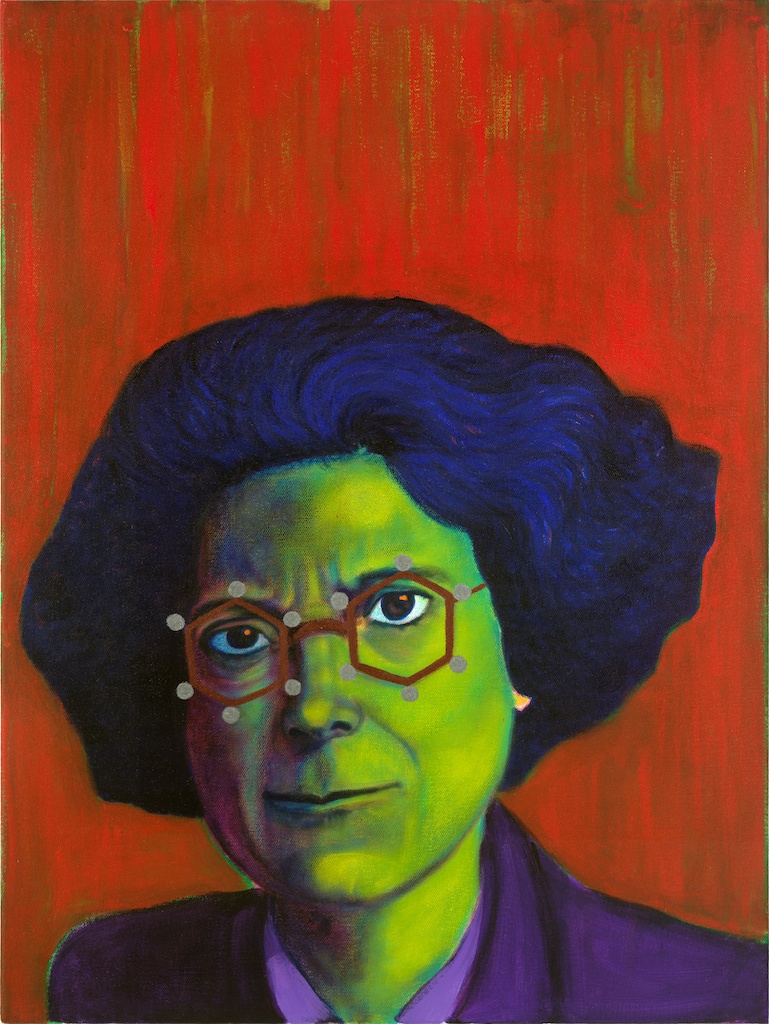Kathleen Yardley Lonsdale
Crystallographer
1903-1971
acrylic on canvas
769 × 1024
Dear You,
I was the 10th child of a very poor Irish family. Four of my siblings died in infancy. I would never grow to my full height. I had rickets as a child, because my parents could not afford milk and fresh vegetables.
When we moved to England, I took classes in physics, chemistry and mathematics at the boys' high school because the girls' school didn't offer these subjects. My older siblings couldn't stay on at school but had to go out to work to help support the family. My brother Fred became a wireless operator and received the last signals from the Titanic in 1912.
At 16, I entered Bedford College for Women, part of the University of London. I wanted to study physics, against the advice of my old headmistress, who said I would never distinguish myself. I came top in the University of London BSc examination in 1922, with the highest marks for 10 years.
I did go jail for a month. It was 1943, during World War II. As a pacifist, I refused to register for civil defense duties, or pay the fine for refusing to register.
Luckily, it was my science and not my politics that I became known. I was the one who figured out that the benzene ring–the molecule responsible for scent–was a flat, regular hexagon. This was something that chemists had been arguing about for 60 years and was an important milestone in organic chemistry.
In 1945, when after 285 years, the Royal Society decided to allow women as members, I was the first woman to be elected to fellowship of the society. In 1968, I became the first woman President of the British Association for the Advancement of Science.
Poverty, or the fact that I was small because of childhood malnutrition did not deter me from embracing my calling as a scientist. Even while raising three children, I worked my calculations in long hand at the kitchen table. My discipline gave me many honors but it was doing the science that fulfilled me the most.
Love,
Kathleen
